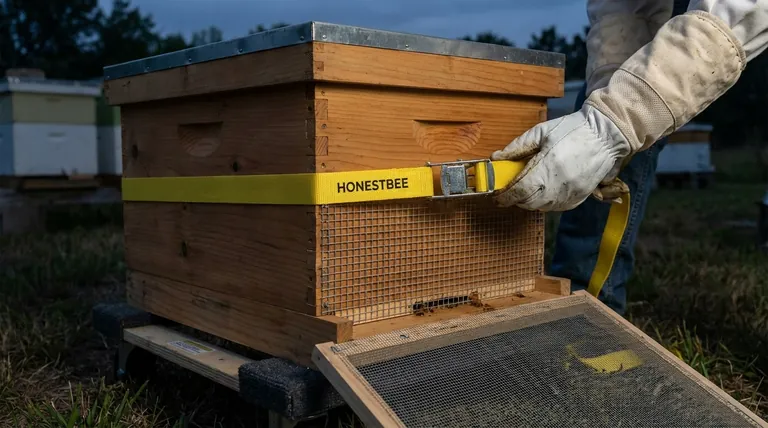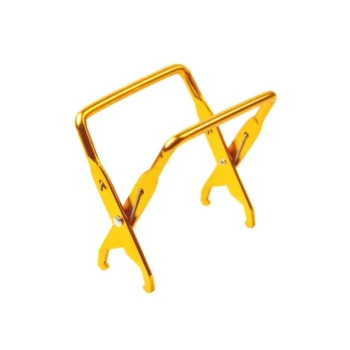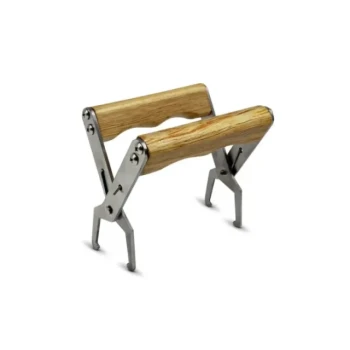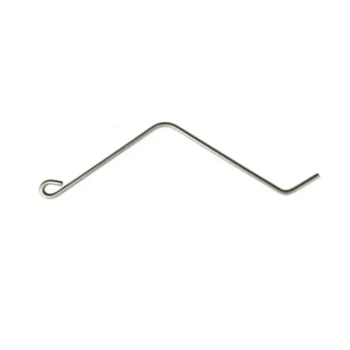To safely move a beehive, you must secure all hive components, block the entrance with a screened material to ensure ventilation, and conduct the move after dark when the entire colony is inside. During transport, the hive must be kept level and packed tightly in the vehicle to prevent shifting, which can damage the comb and harm the bees.
The central goal of any hive move is to minimize stress and prevent overheating. A beehive is a living, breathing superorganism that generates significant heat, and failure to provide adequate ventilation during transit is the single greatest risk to the colony's survival.

Preparing the Hive for Transit
Proper preparation is the most critical phase of a successful move. It ensures the hive is structurally sound and the bees are safely contained without risk of suffocation.
Securing the Hive Components
The individual boxes of a hive (brood box, supers, covers) can easily shift apart. Use ratchet straps to bind the entire hive together vertically, creating a single, stable unit.
For added security, you can screw the different boxes to one another. Also, ensure the entrance reducer is firmly screwed into place so it cannot be dislodged by vibrations during the drive.
Ensuring Proper Ventilation
This is a non-negotiable step. A sealed hive, especially in warm weather, will quickly overheat as the bees generate metabolic heat and fan to regulate temperature.
For short moves, a screened entrance block is sufficient. For longer distances or in hot climates, replace the solid inner cover with a screened travel cover. This provides crucial cross-ventilation and allows heat to escape from the top of the hive.
The Logistics of the Move
With the hive secured, the focus shifts to timing and safe handling. Executing the move correctly protects both the beekeeper and the bees.
Why Timing Matters
Move hives at night or in the very early morning before sunrise. This ensures that all the foraging bees have returned from the field and are inside the hive. Moving during the day will leave a significant portion of your colony behind.
Be aware that bees can be more defensive and agitated in the dark. Always wear your full protective suit and handle the hive with calm, deliberate movements.
Safe Handling and Transport
Beehives are heavy and awkward. Always recruit help or use a dolly or hive lifter to avoid back injury or the disaster of dropping a hive.
When loading the hive onto a truck or trailer, keep it as level as possible. Tilting the hive can cause the frames to shift, crushing bees and breaking delicate comb filled with honey or brood. Pack hives tightly against each other or use wedges to prevent any movement during the drive.
Critical Risks to Avoid
Understanding the potential pitfalls is key to preventing them. A few common mistakes can have catastrophic consequences for your colony.
Overheating
Overheating is the number one cause of colony death during transportation. Never transport a hive without adequate, screened ventilation. If you are stopped for any length of time, try to park in the shade. A truckload of bees can perish in minutes in direct sun.
Shifting and Internal Damage
If a hive is not secured properly, bumps and turns in the road can cause the frames to slam together. This kills bees, destroys brood, and can break the queen cage if you are moving a new package. Keeping the hive level and immobile is essential.
Escaped Bees
A single loose bee in a vehicle cabin can create a dangerous situation for the driver. Double-check that all entrances, cracks, and covers are sealed or screened securely before you begin your journey.
Final Steps for a Successful Relocation
Your actions immediately after the move are just as important as the move itself.
- If your primary focus is a short-distance move (less than 3 miles): Place an obstruction like a branch in front of the entrance after opening it to force the bees to reorient to their new location.
- If your primary focus is a long-distance move (more than 3 miles): Unstrap the hive, remove the entrance block, and walk away promptly to let the bees settle and begin their orientation flights.
- For any move: Leave the colony completely undisturbed for at least a few days, and preferably a full week, before performing your next inspection.
A well-planned and carefully executed move ensures your bees arrive at their new home safe, healthy, and ready to thrive.
Summary Table:
| Precaution | Key Action | Why It's Important |
|---|---|---|
| Securing Hive | Use ratchet straps and screws to bind boxes together. | Prevents shifting and internal damage to comb and bees during transit. |
| Ventilation | Block entrance with screen; use screened travel cover for long moves. | Avoids overheating, the top risk to colony survival. |
| Timing | Move at night or early morning when all bees are inside. | Ensures no foragers are left behind; reduces agitation. |
| Transport | Keep hive level; pack tightly in vehicle to prevent movement. | Protects frames, brood, and queen from harm caused by tilting or shifting. |
| Post-Move | Use entrance obstructions for short moves (<3 miles); leave hive undisturbed for days. | Helps bees reorient to new location and reduces stress after relocation. |
Ensure your apiary's success with professional-grade equipment from HONESTBEE. Moving hives is just one part of effective beekeeping—rely on our durable, wholesale-focused supplies designed for commercial apiaries and distributors. From secure hive straps to ventilated covers, we provide the tools you need to minimize colony stress and maximize productivity. Ready to upgrade your operation? Contact our team today to discuss your bulk equipment needs and keep your bees thriving.
Visual Guide

Related Products
- Professional Galvanized Hive Strap with Secure Locking Buckle for Beekeeping
- Versatile Ratchet Hive Strap with S-Hooks for Secure Fastening
- HONESTBEE Classic Pry Bar Hive Tool with High Visibility Finish for Beekeeping
- Professional Grade Foldable Beehive Handles
- Professional Drop-Style Hive Handles for Beekeeping
People Also Ask
- What are the types of Emlocks available? Choose the Right Strap for Hive Security
- How should a cam buckle strap be installed for optimal performance? Master the Leverage for Maximum Tension
- What is the advantage of using cam buckle straps? Secure Your Load Fast with Simple, Safe Tensioning
- What are the two styles of hive straps? Choose the Right Strap for Your Hive Security
- What are hive straps and why are they used? Secure Your Hives Against Wind, Predators, and Transport



















